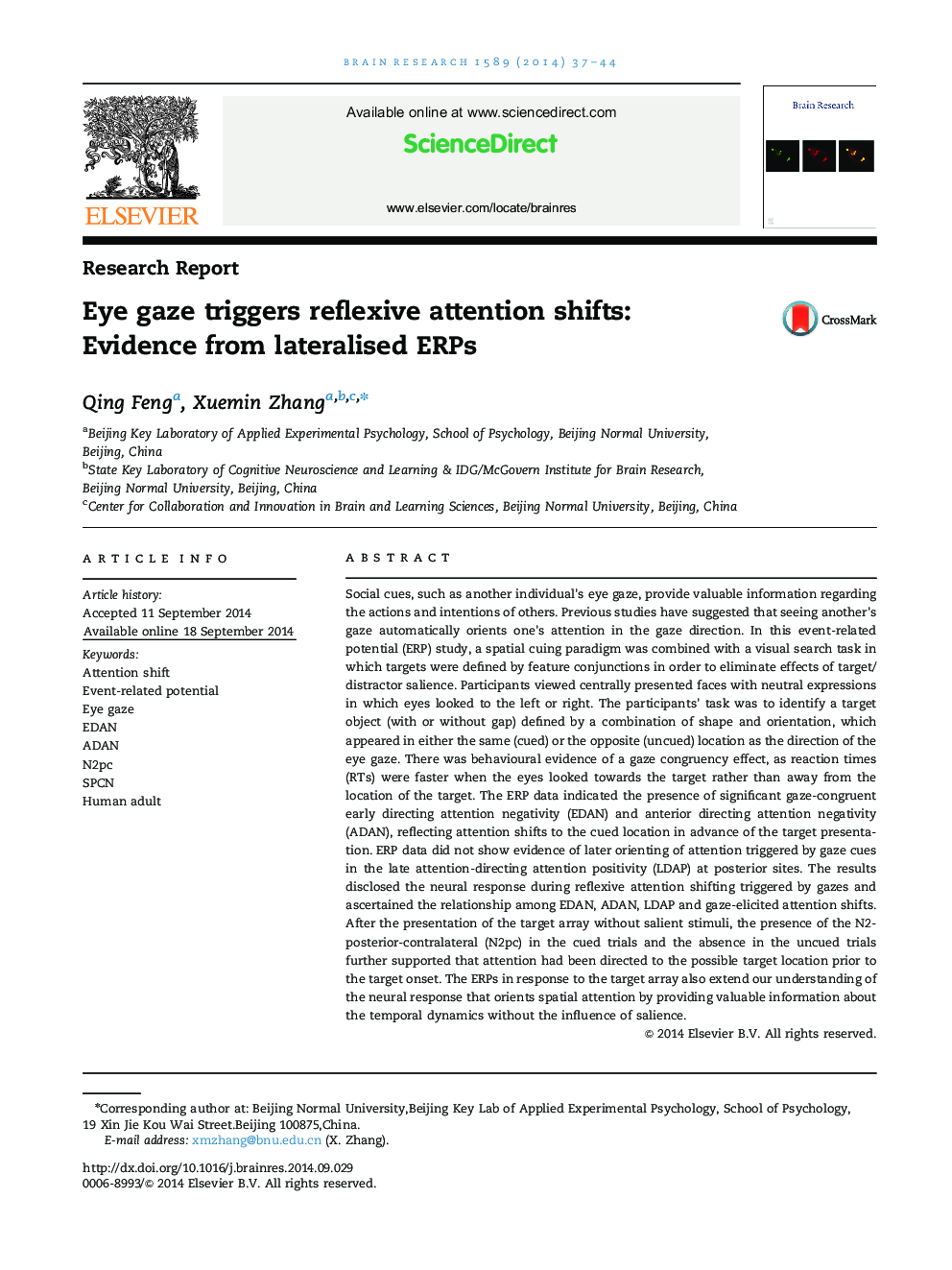| Article ID | Journal | Published Year | Pages | File Type |
|---|---|---|---|---|
| 4324053 | Brain Research | 2014 | 8 Pages |
●The study explored ERP technique in spatial cuing task combined with visual search.●In the task, targets were defined by feature conjunctions.●Reflexive attention shifts were triggered by eye gazes.●Lateralized ERPs EDAN, ADAN, N2pc and SPCN were found.
Social cues, such as another individual׳s eye gaze, provide valuable information regarding the actions and intentions of others. Previous studies have suggested that seeing another׳s gaze automatically orients one׳s attention in the gaze direction. In this event-related potential (ERP) study, a spatial cuing paradigm was combined with a visual search task in which targets were defined by feature conjunctions in order to eliminate effects of target/distractor salience. Participants viewed centrally presented faces with neutral expressions in which eyes looked to the left or right. The participants׳ task was to identify a target object (with or without gap) defined by a combination of shape and orientation, which appeared in either the same (cued) or the opposite (uncued) location as the direction of the eye gaze. There was behavioural evidence of a gaze congruency effect, as reaction times (RTs) were faster when the eyes looked towards the target rather than away from the location of the target. The ERP data indicated the presence of significant gaze-congruent early directing attention negativity (EDAN) and anterior directing attention negativity (ADAN), reflecting attention shifts to the cued location in advance of the target presentation. ERP data did not show evidence of later orienting of attention triggered by gaze cues in the late attention-directing attention positivity (LDAP) at posterior sites. The results disclosed the neural response during reflexive attention shifting triggered by gazes and ascertained the relationship among EDAN, ADAN, LDAP and gaze-elicited attention shifts. After the presentation of the target array without salient stimuli, the presence of the N2-posterior-contralateral (N2pc) in the cued trials and the absence in the uncued trials further supported that attention had been directed to the possible target location prior to the target onset. The ERPs in response to the target array also extend our understanding of the neural response that orients spatial attention by providing valuable information about the temporal dynamics without the influence of salience.
